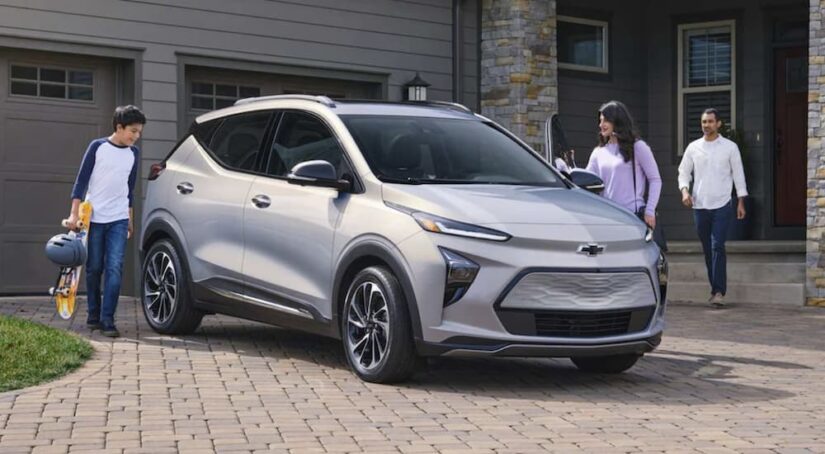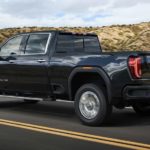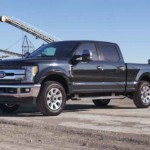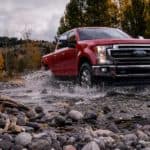The more you know, the better off you are to make the right decisions. When shopping for a car, it helps to learn about different makes and models, but it’s also a great idea to learn about the features you can find within them. The Super Cruise technology you’ll find on select models at your local Chevy dealer is the perfect example of this: it’s typically reserved for high-end trims, but it’s a big selling point for many of those models.
So what is Super Cruise, and is it worth caring about when you’re shopping for your next vehicle? Only you can decide if it’s worth the splurge, but I can take you through everything this technology does and help you determine if it’s something you’ll want. Your budget will ultimately be the deciding factor as you won’t find Super Cruise on starting models—at least, not yet.
What’s Super Cruise?
Let’s start with the basics: Super Cruise is GM’s semi-autonomous, hands-free driving technology. You can find it not only on Chevy models but on those by Cadillac and GMC, too. On compatible roads, activating the Super Cruise system will yield much of the driving tasks to the tech—with certain limitations.
The standard Super Cruise system can handle braking and acceleration, along with steering, although you must remain attentive and engaged at all times. The vehicle will continue to utilize its Driver Attention System to ensure that you pay attention and keep your eyes on the road; if you lose focus, it will warn you and ensure you are ready to take control.
How Does Super Cruise Work?
Essentially, Super Cruise combines several other pieces of technology and safety systems to create a single, comprehensive semi-autonomous driving experience. Think of it as the modern evolution of what started off with basic cruise control. With cruise control, you set a speed and the vehicle maintains it for you—thus, you don’t have to hold your foot on the gas pedal. (We all know how great this is for a long road trip when you’re going to spend hours at a time at a pretty steady speed.)
Adaptive Cruise Control was the next step from there by allowing the vehicle to not just maintain speed but also adjust it. With Adaptive Cruise Control, a vehicle can slow down and even stop based on surrounding traffic; it can then accelerate back to an appropriate speed, making it perfect for dealing with stop-and-go traffic or other conditions when a steady speed isn’t exactly feasible.
Super Cruise is simply the next step in this evolution. It uses extremely detailed maps and GPS to determine where your vehicle is to handle overall navigation and how it should react to the road. From there, it then combines other safety technology, like Adaptive Cruise Control, to maintain a safe speed and adjust to traffic conditions around you. A Lane Sensing Camera is used by other safety software to ensure you stay centered in your lane, and it will warn you when you start to drift; Super Cruise uses this same thing but steers on your behalf to keep your vehicle centered and within your lane.
If you have a vehicle with Super Cruise and you want to use it, all you have to do is first activate Adaptive Cruise Control on a road that’s compatible with the system. If your vehicle detects that you’re on such a road, Adaptive Cruise Control is on, and you’re paying attention, then a Super Cruise indicator will illuminate on the instrument display. At that point, you just press the Super Cruise button on the steering wheel to engage the system; a green light bar on the wheel will illuminate to let you know it’s on, at which point you can take your hands off the wheel. To switch it off, you can hit the button again or press the brake pedal, and you’ll resume control.
Additional Super Cruise Options
Hands-free driving is already impressive, but Chevy has developed some additional features available on certain models with Super Cruise. The two that I find most compelling are Lane Change on Demand, which lets you hit the turn signal to indicate you want to switch lanes, and then the Super Cruise system will change lanes FOR YOU as long as there’s an opening and it’s safe to do so; and Automatic Lane Change, which allows an equipped vehicle to use the turn signal, change lanes to go around a slower vehicle, and then return you to your original lane. These advancements bring Super Cruise a lot closer to actual automated driving. Speaking of which…
Is This Automated Driving?
No, this is not automated driving. There are actually set standards and different levels of automation that car companies like GM are working to achieve. There are six levels of automation, from Level 0 (momentary assistance like Automatic Emergency Braking) to Level 5 (full automation, where a human driver is not needed and the vehicle completely drives itself). As impressive as Super Cruise is, it’s only Level 2 automation, which means car companies still have a long way to go before they get anywhere close to full automation. A big part of why they’re not there yet is the limitations not yet overcome in this technology.
Are There Limitations on Functionality?
As I said, Super Cruise operates—in part—on highly detailed maps and GPS to know where it is and to navigate the road. This means there’s a major limitation in that the system needs to have the maps in the first place. While I’m sure efforts are underway to do so, at this point, the system does not have sufficient maps for every road in America.
That being said, at the baseline, there are more than 200,000 miles of roads throughout the US and Canada that are compatible with Super Cruise. Select vehicles can take advantage of more than 400,000 miles of roadways in North America. It’s a lot of coverage, but you’re not about to use Super Cruise to head to the corner store—at least, not yet.
Since this system relies on the cameras and sensors on your vehicle, it can only operate if those are uncovered and unobstructed. This is semi-autonomous Level 2 technology, so you still have to be available to take over at a moment’s notice and be aware of traffic conditions around you. This system might not be able to function if lane markings on a particular road are poor since it needs to detect them, and you shouldn’t use this system in bad weather like rain, snow, and fog. Finally, you can’t use the Super Cruise system if Chevy’s Teen Driver mode is activated—so if you have a new driver in the house and you’re teaching them safe habits, they won’t be able to use semi-autonomous driving.
Is Super Cruise Worth the Price?
This is the big question, isn’t it? If you’re already shelling out the dough for a high-end trim on one of the Chevy models with Super Cruise available—thus giving you access to this technology—then it could be worth having.
Your particular driving habits will also impact this a lot; if you mostly drive around in the city, where Super Cruise might not be employable, then it’s a bit of a wasted feature. On the other hand, if you do a lot of highway driving and enjoy taking long road trips, then having access to Super Cruise would definitely make your commute or next adventure a lot more enjoyable.
Just remember the limitations of the system and what it can and can’t do; then, you can decide if the added expense is worth it to get a glimpse at the future of driving.



